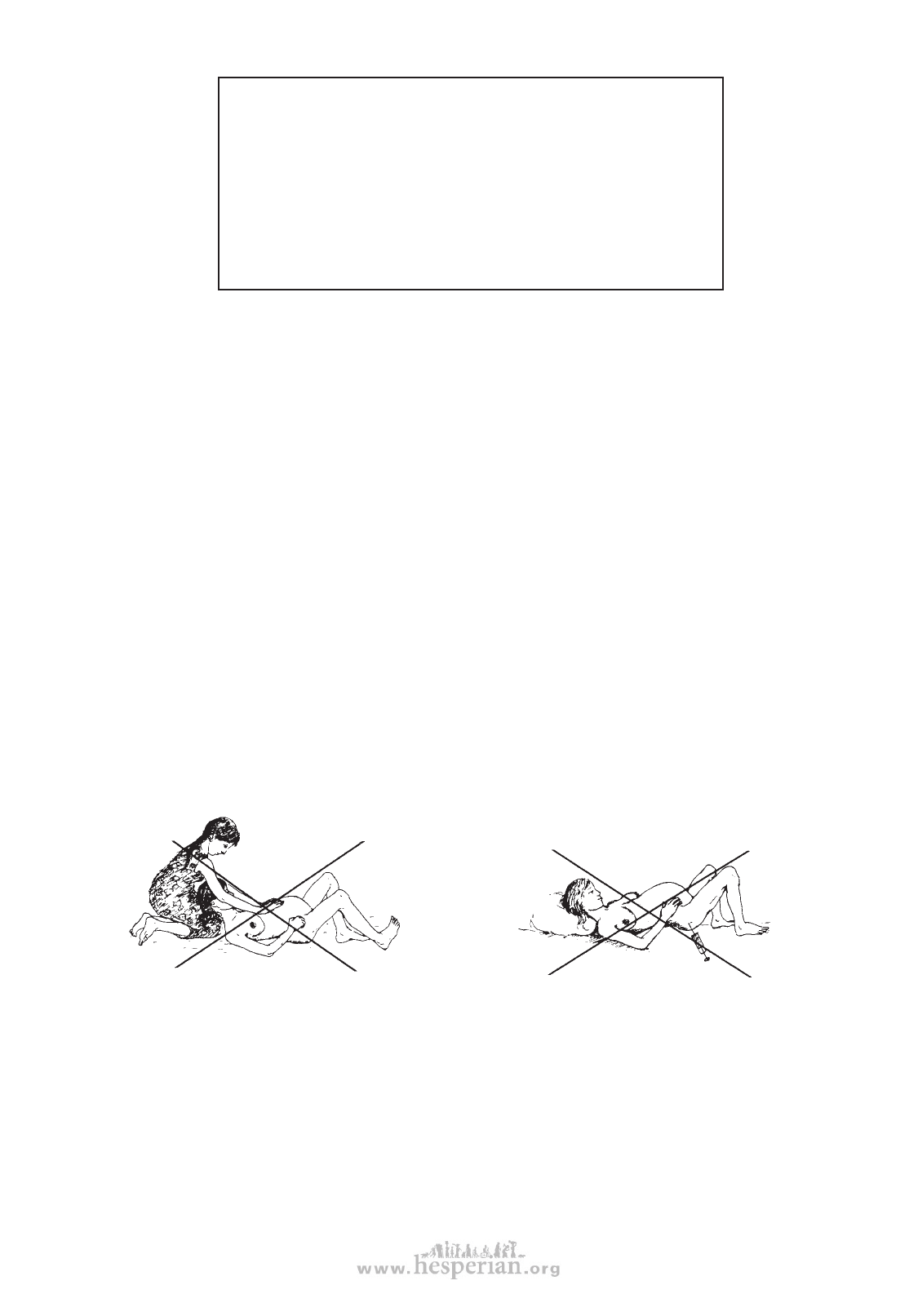
CEREBRAL PALSY 107
CAUTION: Many suggestions for developing basic skills
are discussed in Chapter 34, “Child Development and
Developmental Delay,” and Chapters 36 through 39 on
developing skills for self-care. However, for the child
with cerebral palsy, some of these activities will need
to be done differently to help reduce and not increase
muscle spasms. If any activity increases spasticity, try
it differently until you find a way that reduces muscle
tension and improves position.
PREVENTION
With these precautions, children will be less likely to have cerebral palsy:
• Good nutrition of the mother, both before and during pregnancy, reduces the chance
of premature birth—and of cerebral palsy.
• If possible, girls should avoid pregnancy until full grown (16 or 17 years old).
• Avoid unnecessary medicines during pregnancy.
• Try to avoid getting near persons with German measles during pregnancy. Or get
vaccinated against German measles before becoming pregnant.
• Go for regular health check-ups during pregnancy (prenatal care). If there are any
signs that giving birth may be difficult, try to arrange for a skilled midwife or doctor
to attend the birth—if possible, in a hospital. (See the list of “Signs of Special Risk,“
Where There Is No Doctor, p. 256.)
• During labor, do not let the midwife or doctor try to speed things up by:
pushing forcefully
against the womb,
NO!
or by using injections or hormones
(oxytocin, pituitrin, etc.) before the
child is born.
NO!
• Be familiar with, and be sure your midwife is familiar with, all the precautions and
emergency measures of childbirth. Learn what to do if the baby is born blue and limp
and does not breathe right away, or has the cord wrapped around the neck. Plan for
emergency transport to the nearest clinic or hospital. (See Where Women Have No
Doctor, pages 88 to 95.)
• Breast feed the baby (breast milk helps prevent and fight infection), and make sure the
baby gets enough to eat. (See Where There Is No Doctor, p. 121 and 271.)
• Vaccinate the baby (especially for measles).
disabled village children